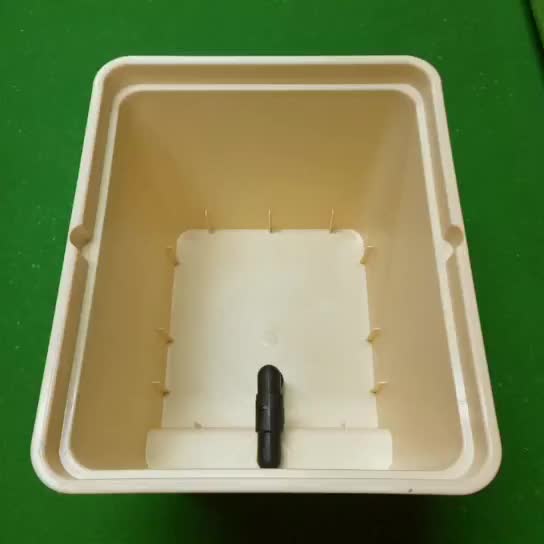

I wanted two 1.5 m long benches, so cut the 3 m planks into the following lengths. I made two benches and needed the following materials:Ħ x (3 m x 11 cm x 38 mm) Pine planks, I wanted to use pallets but couldn't find any on the day so i bought the cheapest planks i could find ($4 each).Ī drill, drill bit and screwdriver (saw if you need to cut the wood but my local hardware store cut mine to size). If you have something that will work as a bench/stand for your dutch buckets then you can skip this step.

I needed benches for my dutch buckets to rest on. and need to give him credit as my system is based on how he does his dutch buckets. I have been watching a lot of Brock Hughes hydroponic videos (mine is outdoors, and if you plan on doing it indoors make sure your plants get enough light). This system can be used, indoors, outdoors or in a greenhouse. I also didn't take exact measurements for this project, so I'm not going to explain exactly where to drill holes etc, it is relatively straight forward. Please note that this is a very flexible instructable, you can make your system with as many or few buckets as you wish, and can change the layout etc. This system is idea for hobby growers who wish to grow large plants (eg tomato,cucumbers, peppers). The excess flows down the bucket, into the second, outer, bucket and then overflows back into the reservoir. The plant then extracts some of the nutrients and water that it needs from this solution. Water with nutrients are pumped from a reservoir, and drip into a inert medium where the plant is growing. Whilst the double buckets aren't necessary it helps with the end of season cleaning as one bucket can simply be lifted out of the system and cleaned and the rest of the system can stay behind.
BATO BUCKETS FOR SALE HOW TO
The lazy gardeners’ best bet.This instructable gives details on how to build a Dutch bucket hydroponic system for reasonable inexpensive cost (this system cost me approximately $150).ĭutch buckets are a type of dripper hydroponics, and this is a double dutch bucket system (two buckets inside each other). Also, a great choice if you travel a lot, as they are self-watering by gravity and will not They are quite expensive but once put in place, provide a good permanent base for specimen plants. Wick system (with AUTOPOTS®)Īutopots would be a good choice for specimen houseplants or perennial fruits like a miniature lemon tree. It’s easy for them to see how the roots expand and dangle in the grow juice. This drip water culture (lettuce raft) is also a good choice if you have children in the home and want them to learn about hydro. It’s so much fun to watch lettuces drop down their roots and take off!

The operation couldn’t be simpler: you float a raft on a sea of nutrient solution. The lettuce raft is one of our favorites. The root system is visible and makes for a great display. Take an old 5 or 10-gallon aquarium and float a raft in it. The lettuce raft would make a great hydroponic science project for a child. This is the most widely used hydroponic setup for commercial greenhouses. Once these are set up, they are easy to use and quite prolific. However, you can put multiple smaller plants into one bucket, like four heads of romaine lettuce. Top drip Dutch Bato buckets are most effective for the larger crops as listed above. Then you could also include several smaller pots for lettuces, herbs, greens, etc. So with this arrangement, you could put large specimen plants like tomatoes, peppers, eggplants, broccoli, or cabbage in large pots. You can fill the flood tray with both large and small pots. The ebb & flow hydroponic setups are quite versatile for a variety of plant sizes. Each system has its pros and cons, and what you want to grow will be a big deciding factor. We suggest you explore all four of them before deciding which one would be best for your needs. You can use some of the materials and equipment from your first project when you get ready to upgrade. Later, we’ll provide in-depth instructions for a bigger and better system. This will “get your feet wet” as you learn the basics of hydro.
BATO BUCKETS FOR SALE FREE
Then we provide free plans so you can build your own 1-6 plant setup. We explain and diagram each process so you understand how it works.


 0 kommentar(er)
0 kommentar(er)
